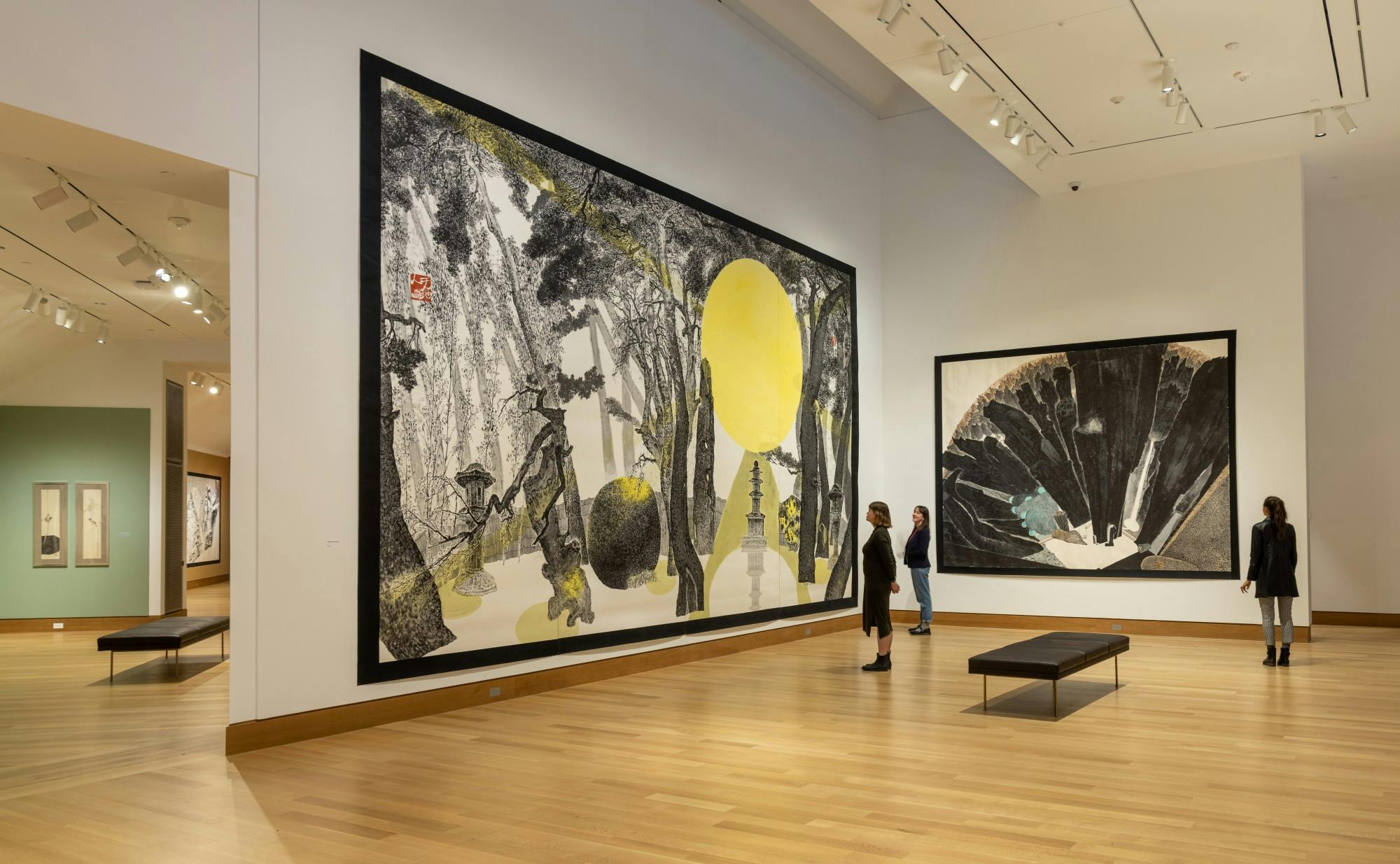‘Park Dae Sung: Ink Reimagined,’ a solo exhibition of the artist’s contemporary ink-and-wash works, is currently on display at the Hood Museum of Art until March 19, 2023. The exhibition is not only the largest exhibition of Park’s art to ever reach America, but is also one of five major exhibitions currently available in the U.S.. Furthermore, Park gave a lecture at the Hood on Nov. 3 and the Hood Museum hosted a full-day symposium about Korean contemporary art, co-organized by the College, the Korea Foundation and the Museum of Modern and Contemporary Art on Nov. 4.
Park blends traditional and modern practices of the ink-and-wash technique to portray a wide range of subjects — from the colossal landscapes of Mount Halla and Mount Kumgang, to smaller portraits of birds and traditional Korean porcelain, to impressionistic interpretations of sprawling gardens and twenty-meter-long handscrolls filled with calligraphy.
“Magnificent View of Samneung,” which can be viewed in person at the Hood Museum, is perhaps Park’s most famous piece, offering a mesmerizing and meditative view of the artist’s fog-ridden garden doused in moonlight. Other works on display include “Heaven, Earth and Human” and “Flower Rain.”
Hyunsung Ryu ’25, a Korean exchange student at Dartmouth studying art history, found that the pieces captured the essence of the actual Korean landmarks they were based on.
“Both paintings gave me the experience of visiting a new version of Korean landmarks,” Ryu said. “Kumgang Mountain is well-known for its beautiful views and having a different face every season. Park’s paintings showed the winter version. I could almost feel the blowing wind and snow.”
Beyond being a prolific artist, Park is also a renowned philosopher. Park lost both of his parents and his left arm as a child during the Korean War, and he often speaks about how his physical impairment has shaped the way in which he views his own purpose and life.
“When the body is uncomfortable, the mind does not become sluggish and is awake. I became who I am because of my disabled arm, so I refrain from being (too) comfortable,” Park shared with the Hood.
Sunglim Kim, associate professor of art history and Asian societies, cultures and languages, curated the exhibition. Kim, who has known Park for over fifteen years, elaborated on what Park’s philosophies truly mean.
“[Park] describes a sort of ‘beauty in discomfort,’” Kim said. “Nowadays, people only search for comfortable and convenient things. But he believes that if you do that, you become complacent in that comfort. He believes that a person has to be sort of uncomfortable to progress forward and become a better person.”
Kim added on to describe how the artist and philosopher moves through life.
“He describes his lifestyle as moving backwards — people want to move forwards, but he’s always trying to move backwards; people want to move quickly, but he’s always trying to move slowly,” Kim said. “The ‘beauty of slowness’: moving slowly, taking the more difficult route.”
Kim also explained how Park’s philosophies have contributed to his fame and reputation in Korea. Kim noted that Park does not have any formal higher education and grew up isolated in the countryside. Yet, he has grown to have a wide network of friends that include politicians, chaebol heads, talents, art historians and professors.
“Once they become friends, they stay friends for a long time because of his philosophies of going slow, going backwards, being uncomfortable, having less, living in nature,” Kim said. “People that are going through a hard time who come and visit him feel comforted by him and become long-term friends.”
Yifeng Shen ’22, one of Kim’s students who visited the Hood, noticed how Park’s background has influenced both his art and his philosophy.
“My father once told me that you can see an artist’s soul through his artwork, and that’s exactly how I felt when I entered Park’s exhibition last week,” Shen said. “His life was filled with adversity, but all those challenges subtly reshaped his creative philosophy and his way of living.”
Park’s work is also significant in how it represents Korean culture to international audiences. Kim said that Korean visual art — in this case Park’s paintings — is contributing to the ever-growing presence of Korean pop culture in the global scene.
“What I think is, in the 21st century, Korean pop culture — films, movies, dramas — is very popular right now,” Kim said. “But for this pop culture to exist, we have a very nuanced, deep-rooted history. If you don’t know this history and you only consume pop culture, then you’re missing the point.”
The exhibit will remain at the Hood until March 19. During this time, visitors can engage with the exhibit in a number of ways, learning about Korean culture and life along the way. Entry to ‘Park Dae Sung: Ink Reimagined’ is free and available to the public.




